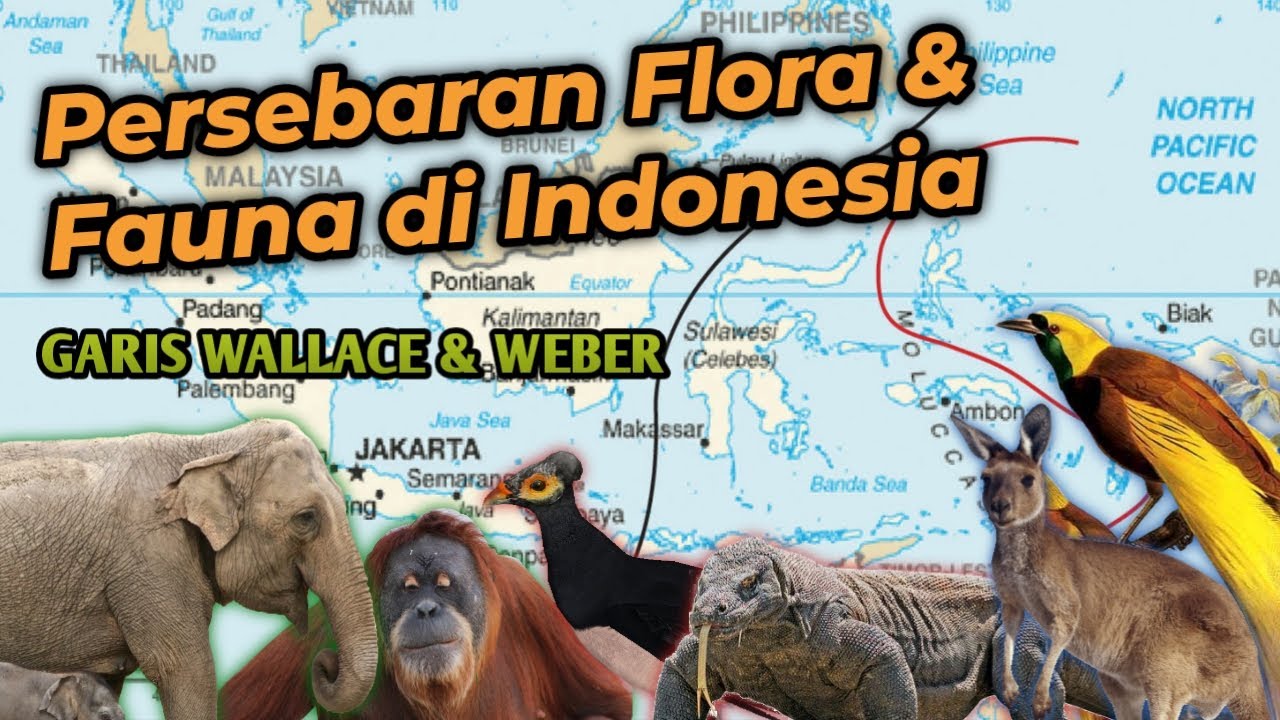Pembagian Wilayah Fauna di Dunia
Summary
TLDRThe script discusses the division of the world's fauna into six major zones: Nearctic, Palearctic, Oriental, Australian, Ethiopian, and Neotropical. It highlights the specific regions included in each zone and provides examples of fauna unique to those areas. For instance, the Nearctic zone includes animals like the Bison and Mockingbird, while the Palearctic zone features species such as the Polar Bear and Red Panda. The Oriental zone is home to the Tiger and Elephant, the Australian zone to the Koala and Kangaroo, the Ethiopian zone to the Giraffe and Gorilla, and the Neotropical zone to the Capybara and Sloth.
Takeaways
- 🌍 The world is divided into six faunal regions: Nearctic, Palearctic, Oriental, Australian, Ethiopian, and Neotropical.
- 🐾 The Nearctic zone includes regions like Greenland and North America, and notable fauna include Bison, Salamander, Red Dog, Muskox, and Mockingbird.
- 🐻 The Palearctic zone encompasses Europe, North Africa, and the Himalayas, with fauna such as Polar Bear, Siberian Tiger, Arctic Fox, Panda, and Snow Rabbit.
- 🐘 The Oriental zone covers India, Southeast Asia, and China, featuring animals like the Bengal Tiger, Elephant, Gibbon, Orangutan, Tapir, and Sambar Deer.
- 🦘 The Australian zone includes Australia, New Zealand, and Papua New Guinea, with unique fauna like the Koala, Wombat, Cassowary, Kangaroo, Wallaby, and the Lyrebird.
- 🦏 The Ethiopian zone comprises Southern Africa, the Atlas Mountains, and the Sahara, with species such as Giraffe, Zebra, Lion, Cheetah, Elephant, Gorilla, and Chimpanzee.
- 🐨 The Neotropical zone covers South America, Central America, and parts of Mexico, with fauna including the Capybara, Armadillo, Vampire Bat, Sloth, and Tarantula.
- 🌱 Each faunal zone is characterized by distinct ecosystems and climates that support a unique set of animal species.
- 🐇 The script provides a brief overview of the main animal species found in each of the six faunal zones.
- 🌱 The diversity of fauna is a reflection of the Earth's varied environments and the adaptation of species to their habitats.
Q & A
How many zones are the world's fauna divided into?
-The world's fauna is divided into six zones.
What are the six zones of fauna distribution mentioned in the script?
-The six zones of fauna distribution are Nearctic, Palearctic, Oriental, Australian, Ethiopian, and Neotropical.
Which regions are included in the Nearctic zone?
-The regions included in the Nearctic zone are Greenland and North America.
What are some examples of fauna in the Nearctic zone?
-Examples of fauna in the Nearctic zone include the Bison, Salamander, Red Dog, Muskox, and Mockingbird.
Which continents and regions are part of the Palearctic zone?
-The Palearctic zone includes Europe, North Africa, and the Himalayas.
What are some fauna species found in the Palearctic zone?
-Fauna species in the Palearctic zone include the Polar Bear, Reindeer, Arctic Fox, Panda, and White Rat.
What regions constitute the Oriental zone?
-The Oriental zone consists of India, Southeast Asia, and China.
List some fauna species that are part of the Oriental zone.
-Fauna species in the Oriental zone include the Tiger, Elephant, Gibbon, Orangutan, Tapir, Antelope, and Sambar Deer.
Which areas are covered by the Australian zone?
-The Australian zone includes the regions of Australia, New Zealand, and Papua.
What are some examples of fauna in the Australian zone?
-Examples of fauna in the Australian zone are the Koala, Wombat, Papuan Tree Kangaroo, Kangaroo, Wallaby, Cassowary, and Lyrebird.
What regions are included in the Ethiopian zone?
-The Ethiopian zone includes regions of Southern Africa, the Atlas Mountains, and the Sahara.
List some fauna species found in the Ethiopian zone.
-Fauna species in the Ethiopian zone include the Giraffe, Zebra, Lion, Kudu, Antelope, Gorilla, and Chimpanzee.
What areas are encompassed by the Neotropical zone?
-The Neotropical zone includes South America, Central America, and most of Mexico.
What are some examples of fauna in the Neotropical zone?
-Examples of fauna in the Neotropical zone include the Armadillo, Vampire Bat, Sloth, Howler Monkey, and Dung Beetle.
Outlines

Этот раздел доступен только подписчикам платных тарифов. Пожалуйста, перейдите на платный тариф для доступа.
Перейти на платный тарифMindmap

Этот раздел доступен только подписчикам платных тарифов. Пожалуйста, перейдите на платный тариф для доступа.
Перейти на платный тарифKeywords

Этот раздел доступен только подписчикам платных тарифов. Пожалуйста, перейдите на платный тариф для доступа.
Перейти на платный тарифHighlights

Этот раздел доступен только подписчикам платных тарифов. Пожалуйста, перейдите на платный тариф для доступа.
Перейти на платный тарифTranscripts

Этот раздел доступен только подписчикам платных тарифов. Пожалуйста, перейдите на платный тариф для доступа.
Перейти на платный тарифПосмотреть больше похожих видео

Persebaran Fauna di Indonesia dan di Dunia

PERSEBARAN FAUNA DI DUNIA

PERSEBARAN FAUNA DI DUNIA #geography #education #kurikulummerdeka #flora #fauna

Garis Wallace dan Weber - Persebaran Flora & Fauna di Indonesia | Dunia Biologi

Keanekaragaman Hayati di Dunia - Biologi kelas X

Geo XI. 9. Persebaran Fauna di Dunia.
5.0 / 5 (0 votes)
